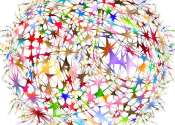Prize winning topics found to deliver more science papers and citations than non-prize-winning topics
A trio of researchers from Northwestern University and Southern University of Science and Technology, has found that topics related to more prize-winning in the science field tend to lead to more papers being written about ...









